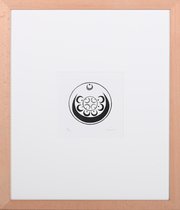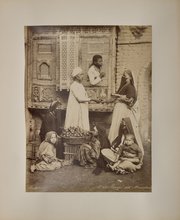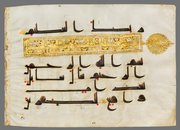
Mughal Thumb Ring
Museum of Islamic Art
- Title:
- Mughal Thumb Ring
- Production place:
- North India
- Date:
- 1750 - 1850
- Period:
- Mughal
- Title:
- Mughal Thumb Ring
- Production place:
- North India
- Date:
- 1750 - 1850
- Period:
- Mughal
- Material:
- Gold, Ruby, Enamel, Silver
- Technique:
- Gem setting, Hammering, Cabochoning, Enamelling, Foil-backing
- Dimensions:
- 1.7 × 4 × 3 cm
This thumb ring is also known as an archer's ring, and would have originally been worn to protect the thumb from the fast-moving bow string. Many Mughal thumb rings are carved from a single piece of hard stone, such as agate, serpentine, rock crystal and jade; however, this jewelled example has a large cabochon ruby in its centre, surrounded by foiled ruby-foliage, and is set against emerald green enamelling. The reverse of the ring is decorated with an equally fine gold and green enamelled pattern. Starting from the Mughal emperor Jahangir’s reign (r. 1013-37 AH/1605-27 CE), thumb rings became symbols of status. They are often illustrated in paintings from the period, suspended on silk threads attached to the sashes of emperors and the ruling elite.



